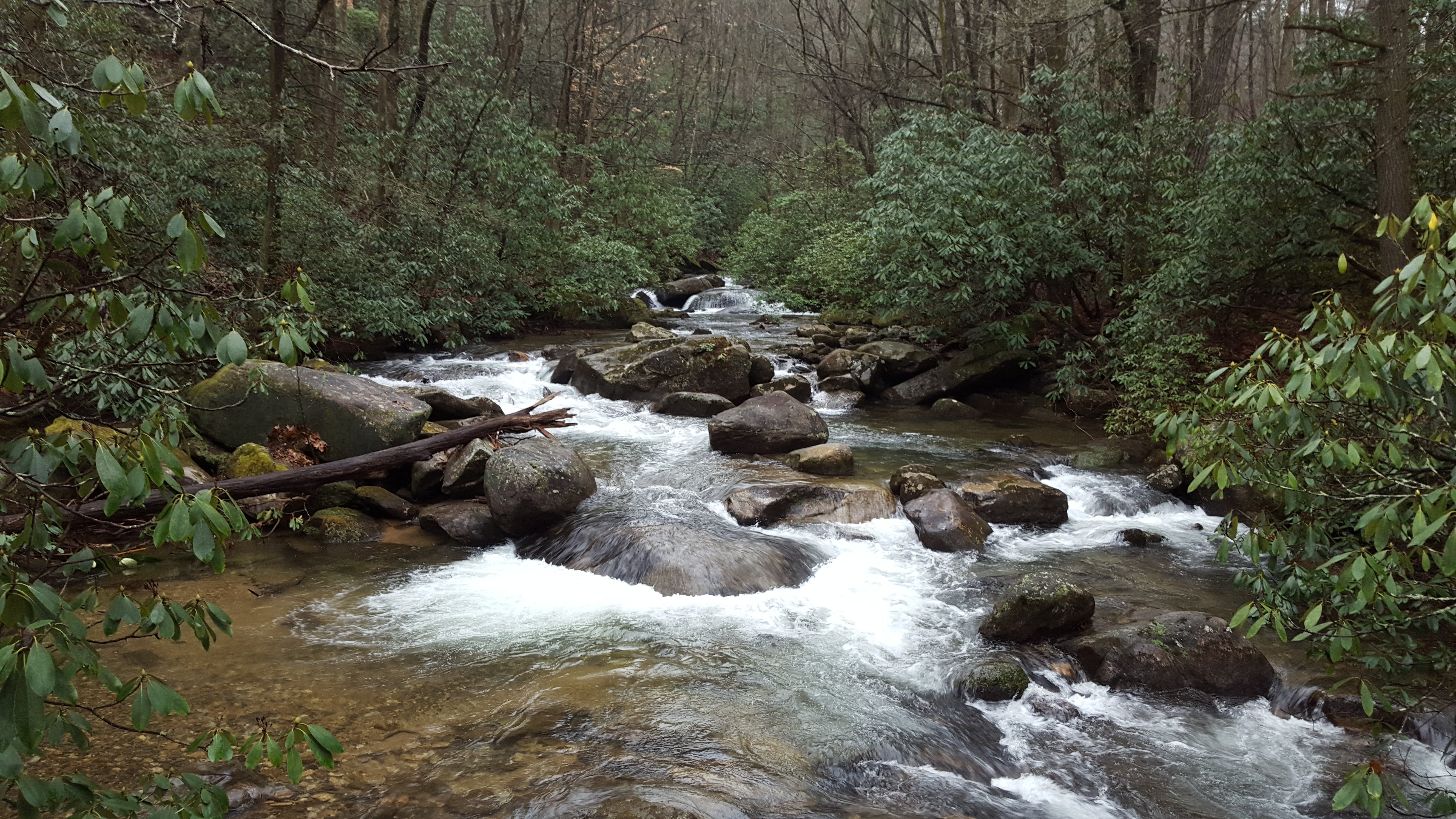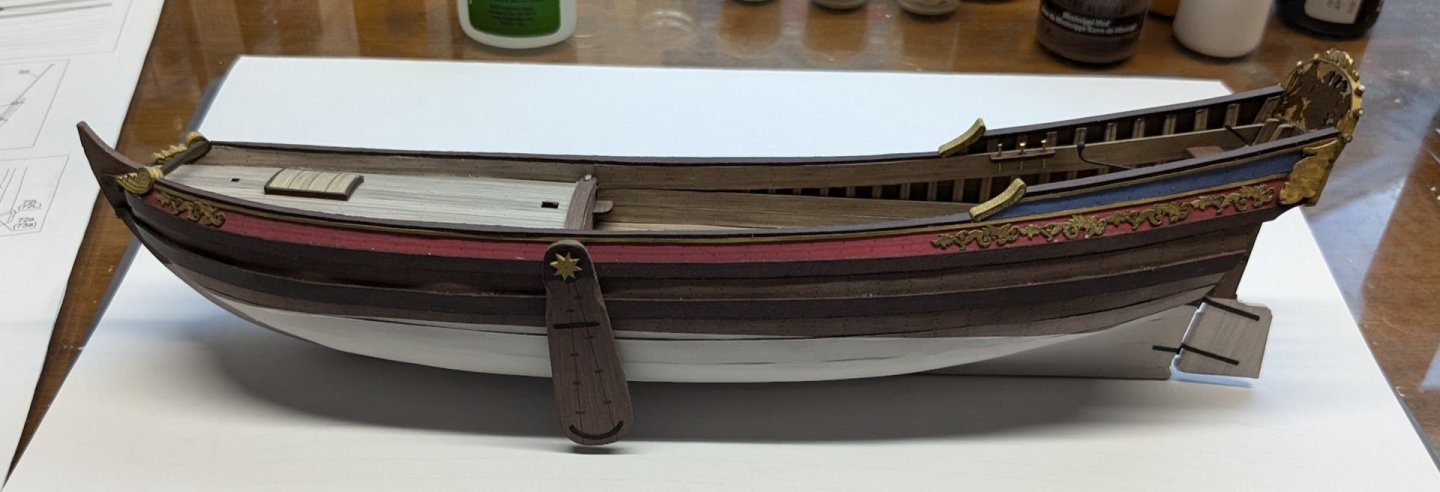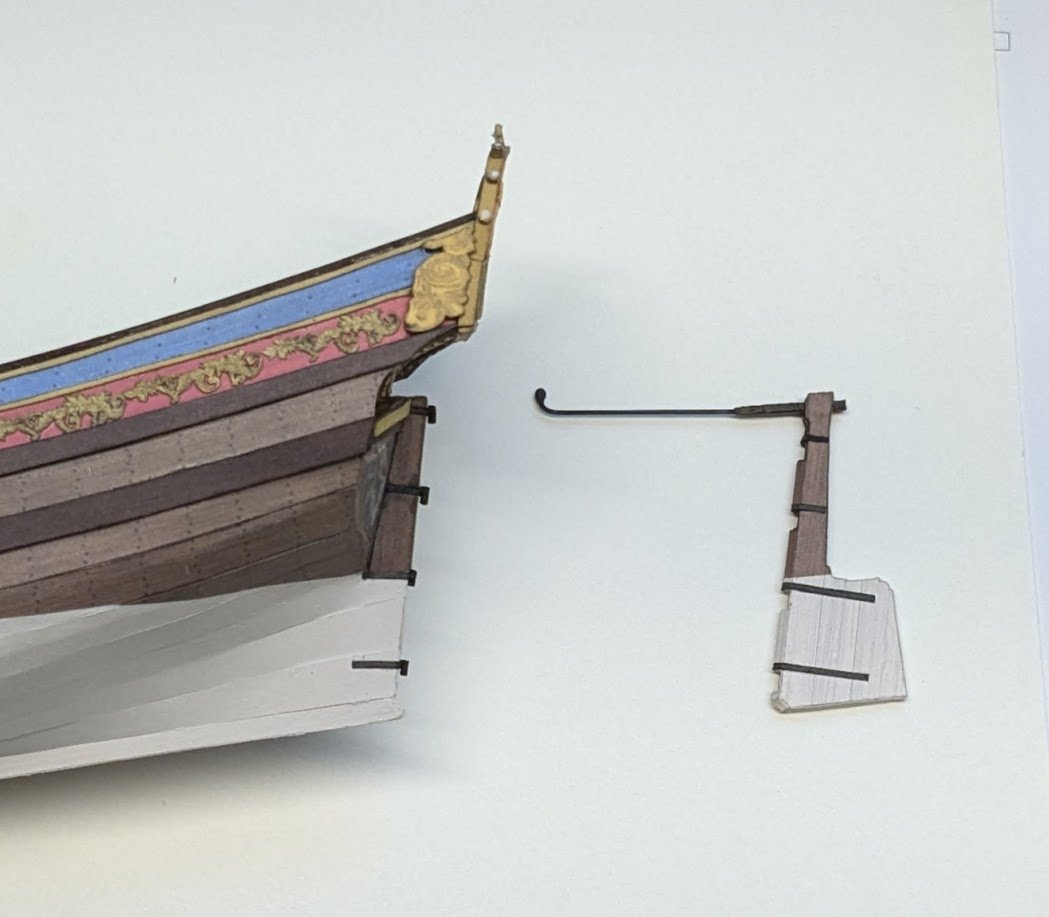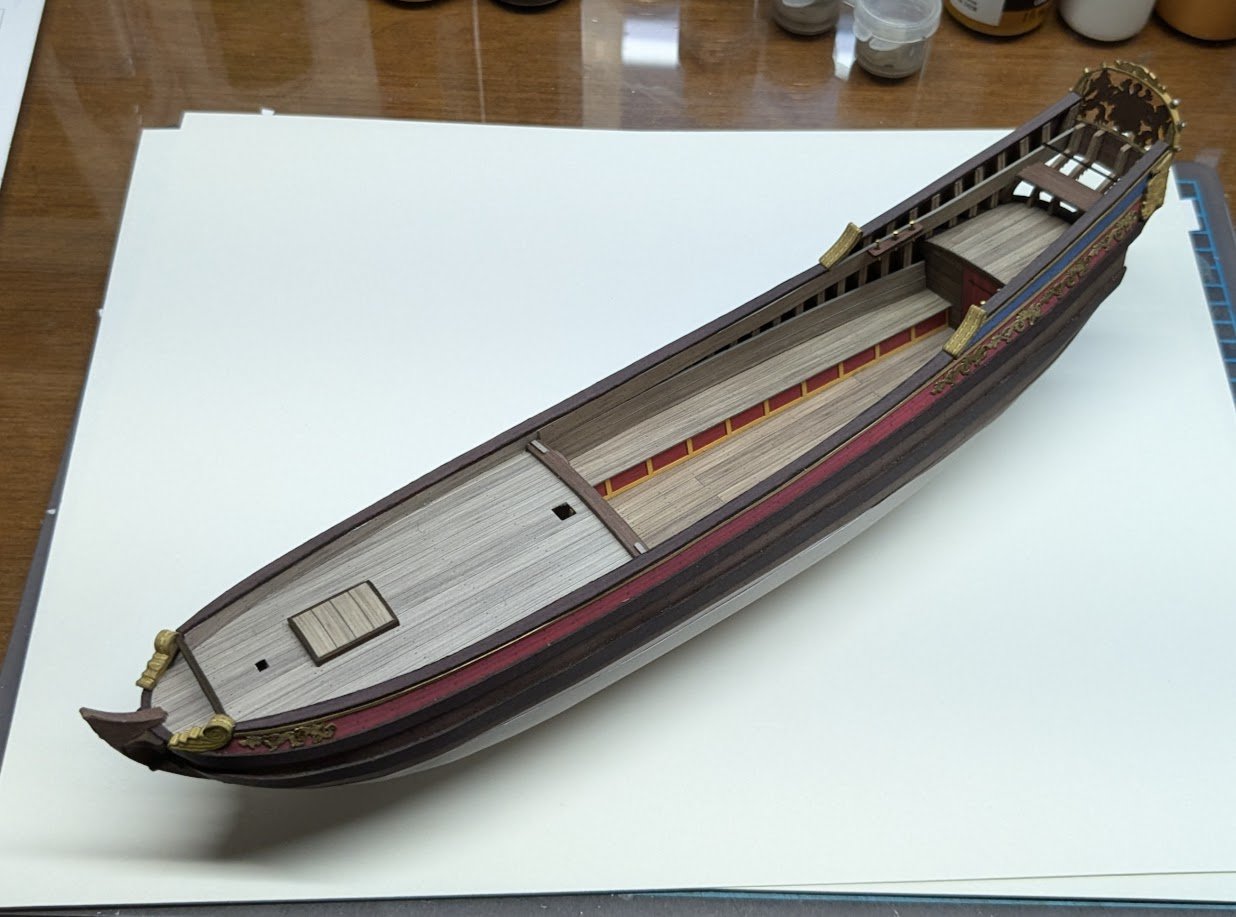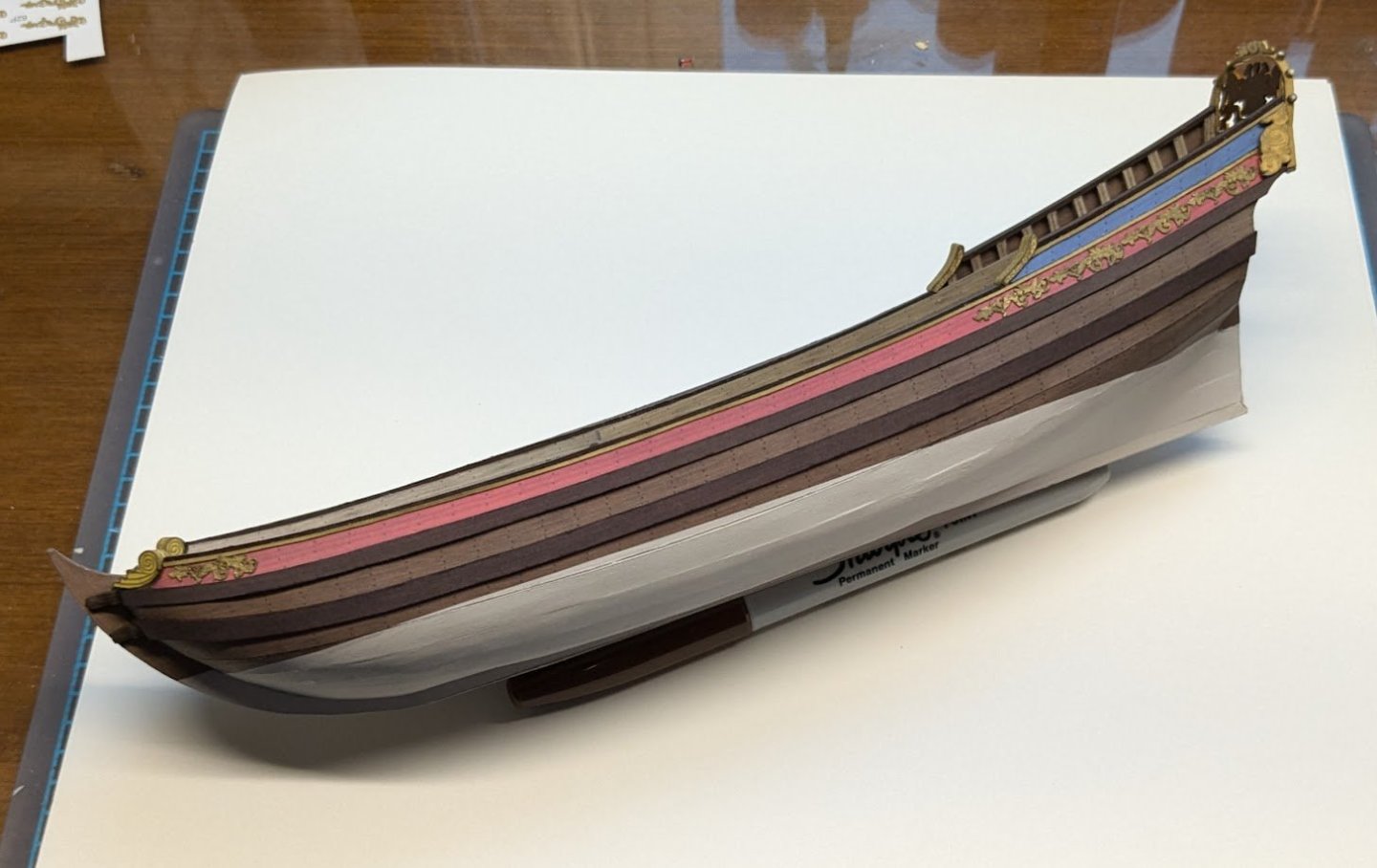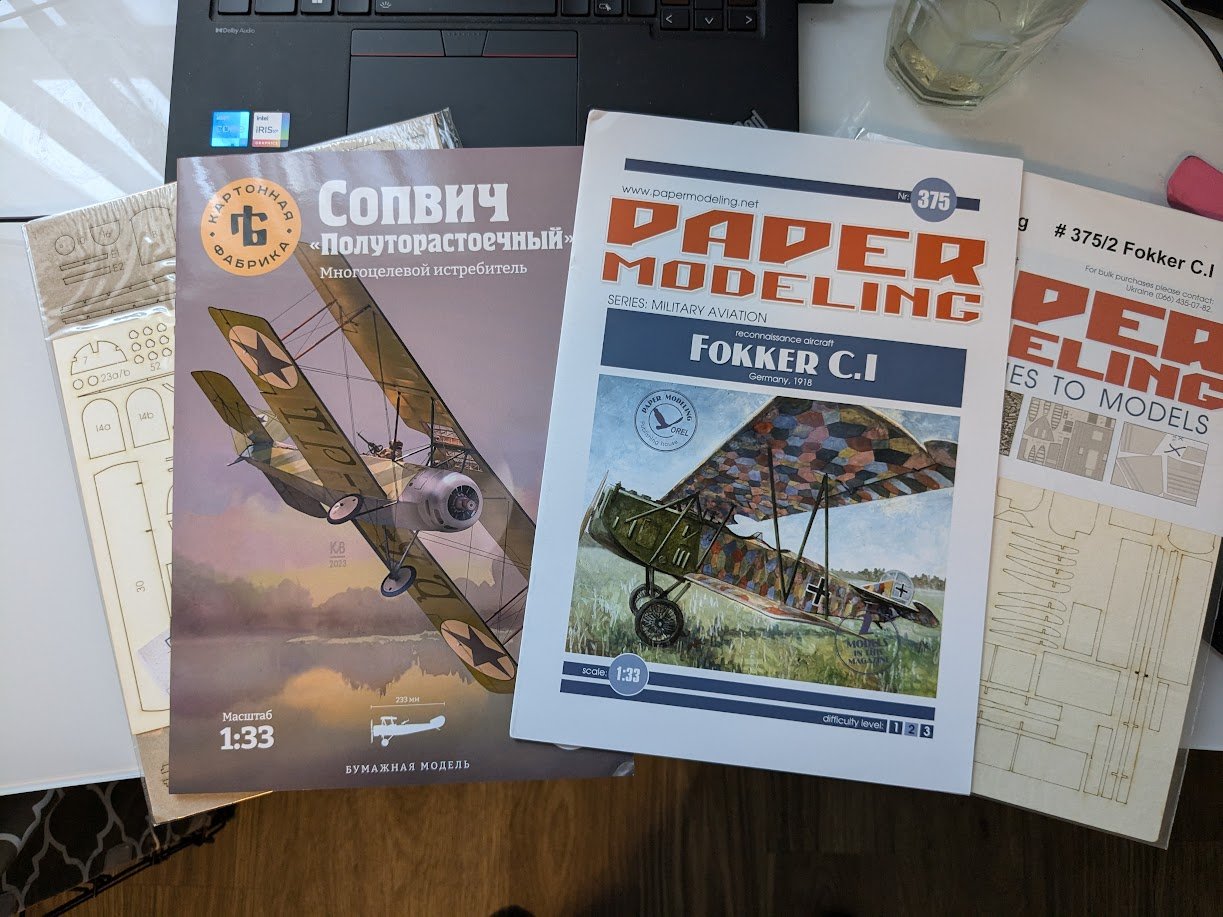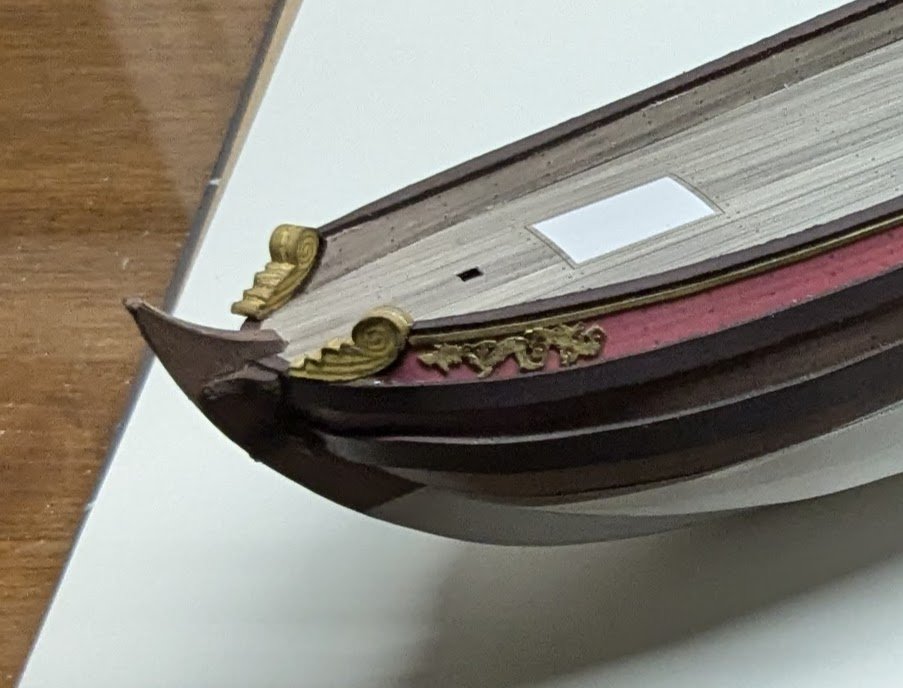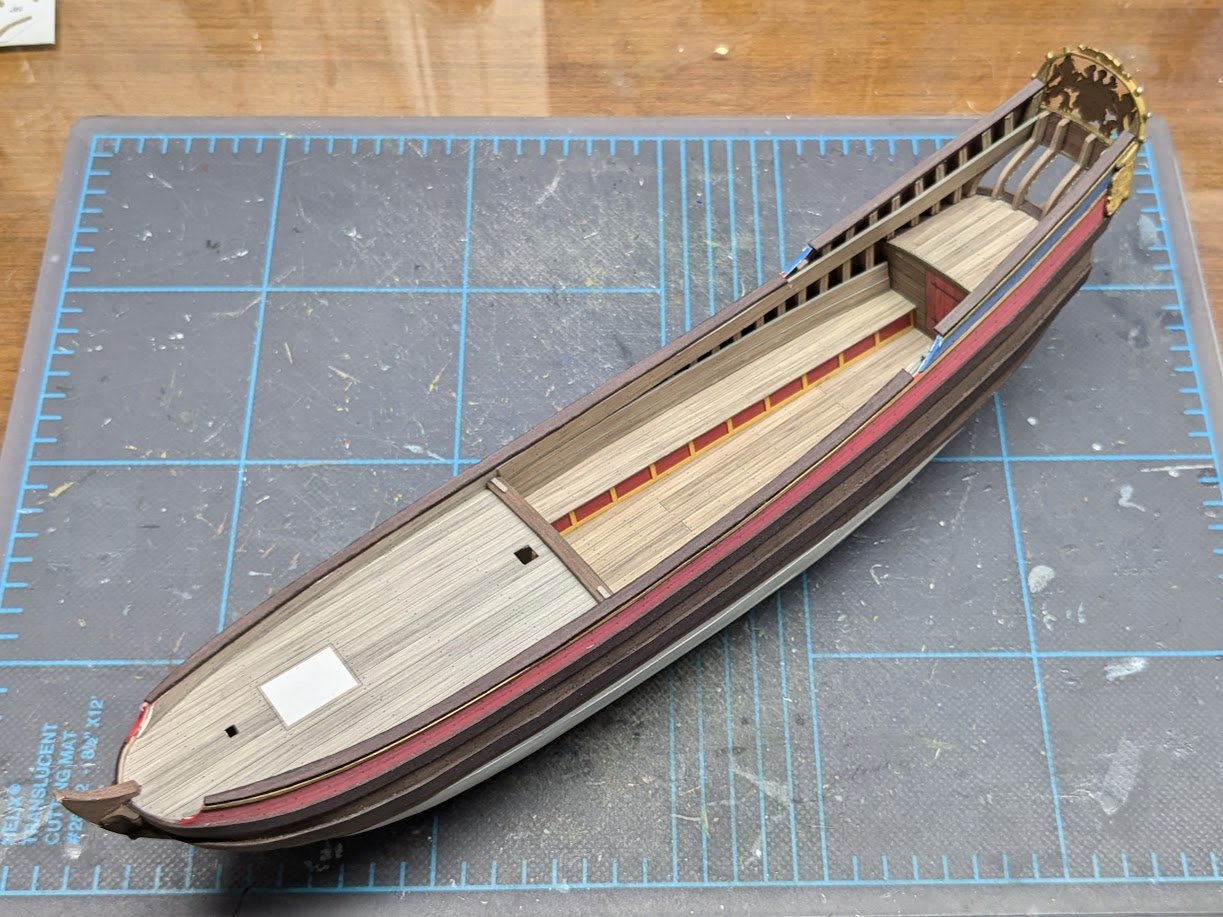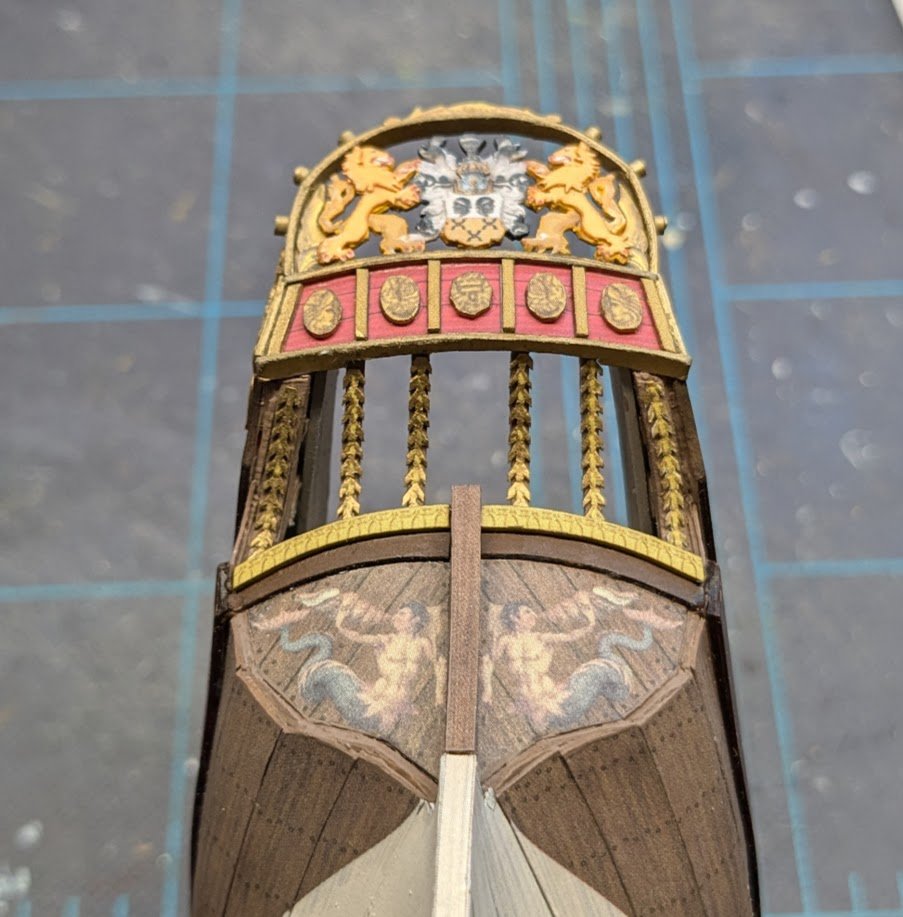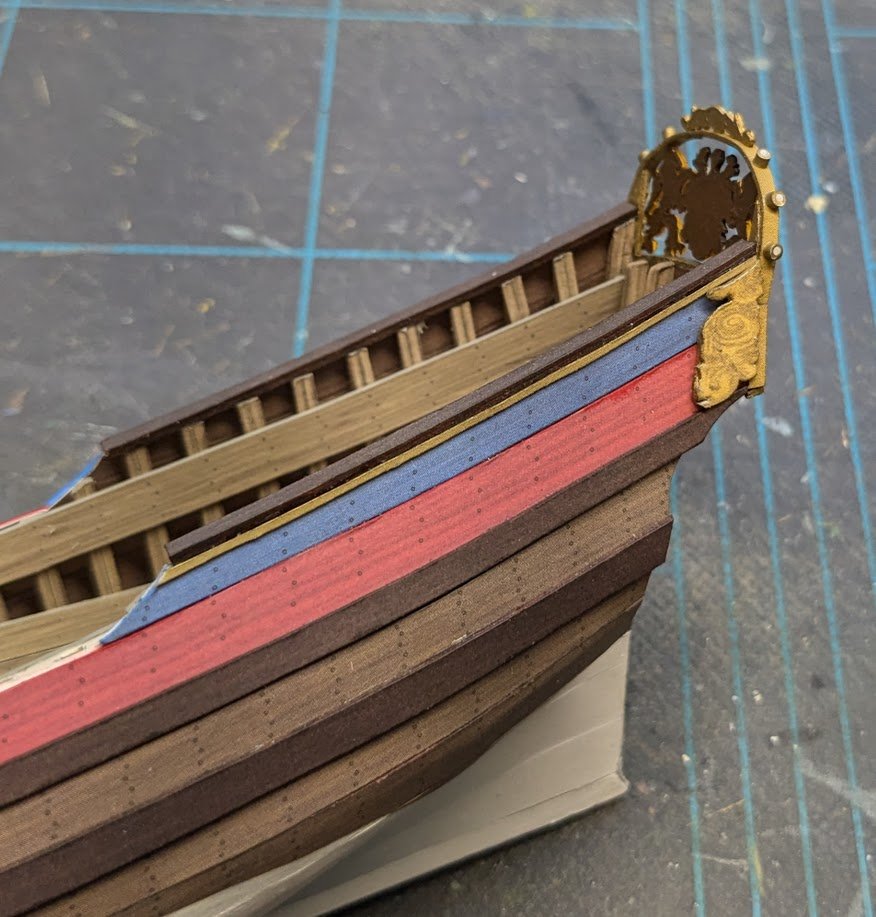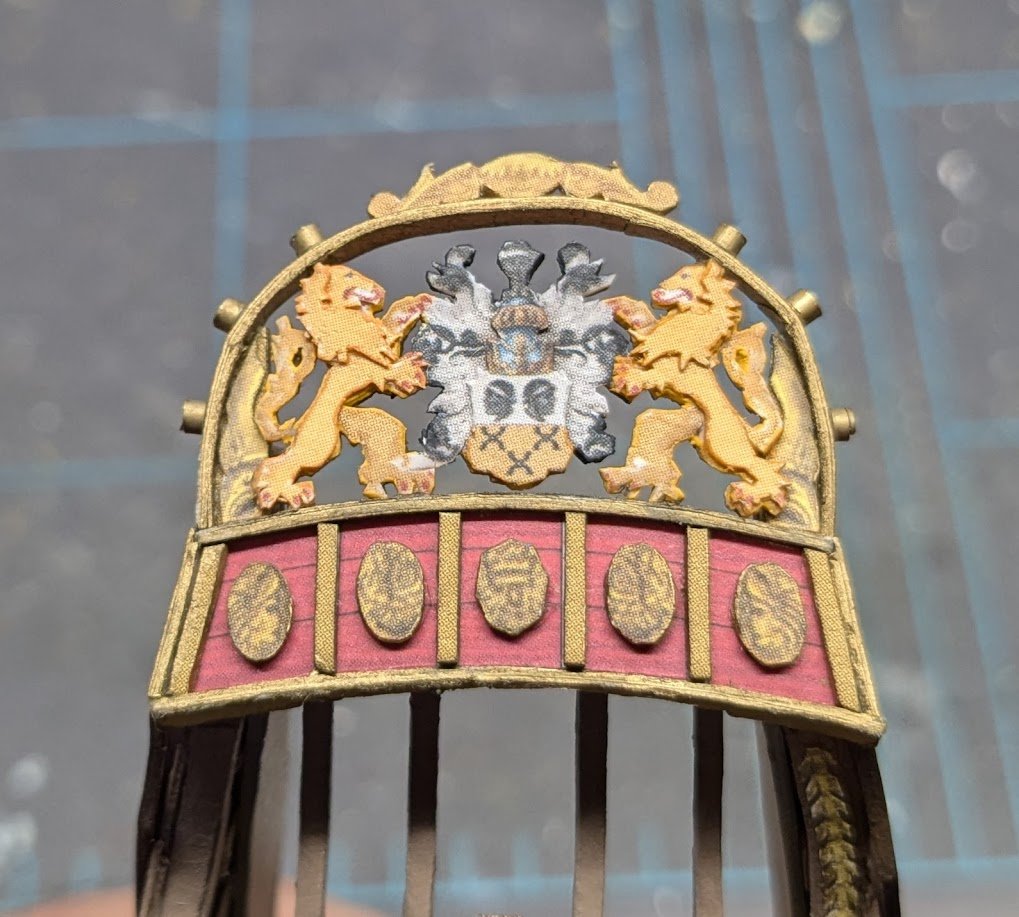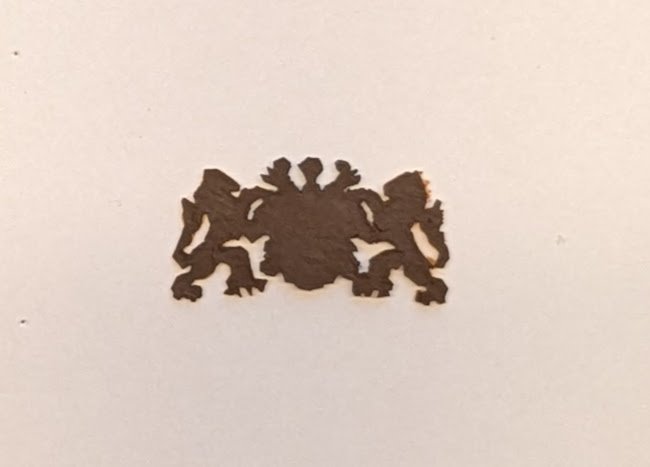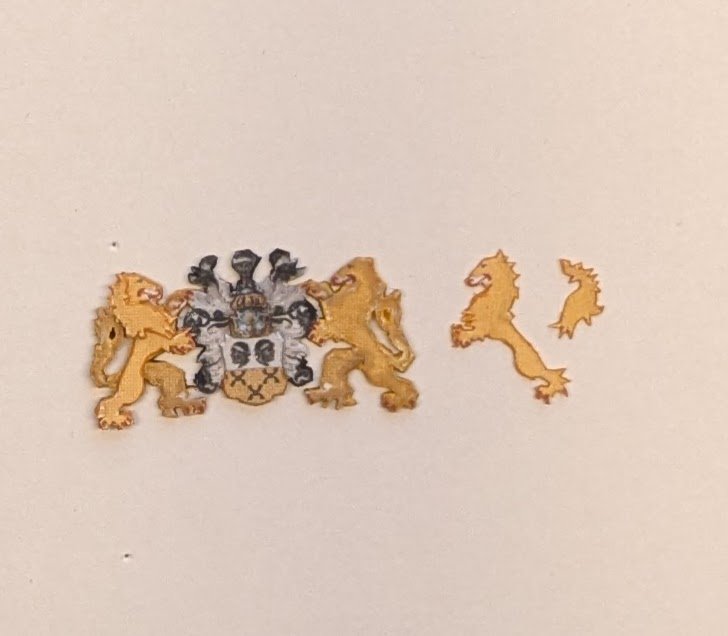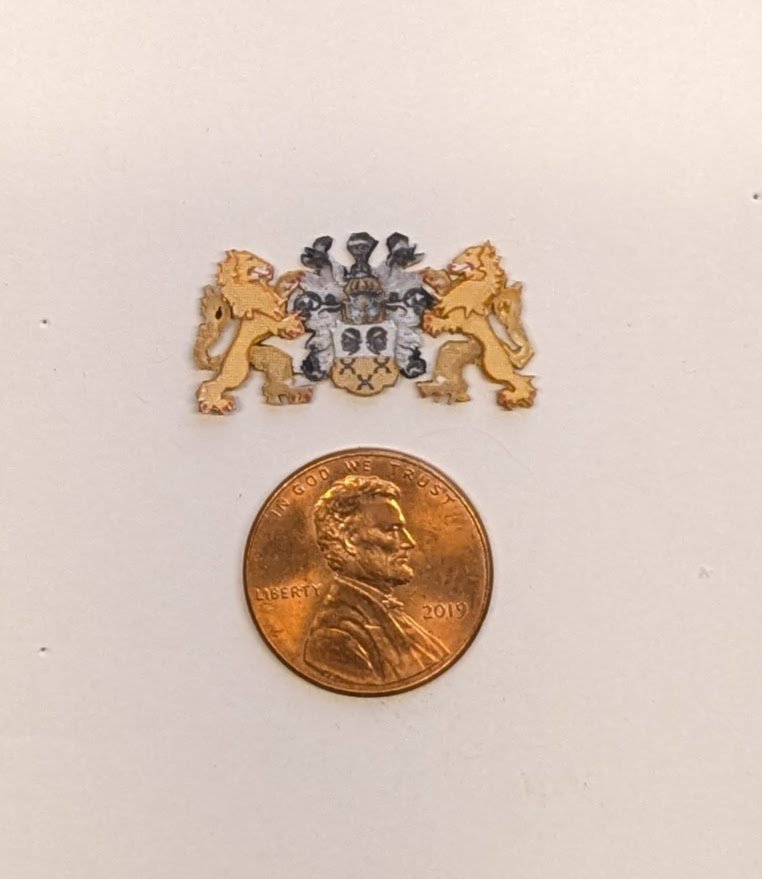-
Posts
10,445 -
Joined
-
Last visited
Content Type
Profiles
Forums
Gallery
Events
Everything posted by ccoyle
-
Welcome aboard!
-
- 146 replies
-
- Speeljacht
- Seahorse
-
(and 2 more)
Tagged with:
-
I made it this far on lee boards today. Part-way through the second one, my internal modeling-mojo alarm clock went ding.
- 146 replies
-
- Speeljacht
- Seahorse
-
(and 2 more)
Tagged with:
-
It will be glued. It has faux pintles and gudgeons.
- 146 replies
-
- Speeljacht
- Seahorse
-
(and 2 more)
Tagged with:
-

San Martin by MikkiC - Dusek - 1:72
ccoyle replied to MikkiC's topic in - Kit build logs for subjects built from 1501 - 1750
I don't doubt that the plans are correct on that point. Remember that a profile only shows how the piece looks from the side, and not necessarily as the joint looks along its whole length. Transoms did often overlap the aft edges of the hull, especially on these older ships. -
The rudder and its hardware are now complete. I won't hang the rudder until later, because you know how those things like to get knocked loose.
- 146 replies
-
- Speeljacht
- Seahorse
-
(and 2 more)
Tagged with:
-
The hull is now done. After finishing up the friezes on the starboard side, I added the cockpit bench, sheet horse, pinrails, forward hatch, and a few other bits. There's really only three big tasks left to do: rudder, leeboards, and masting & rigging.
- 146 replies
-
- Speeljacht
- Seahorse
-
(and 2 more)
Tagged with:
-
Interaction Hobbies offers the CR LAMB in several scales. Here's the link to the 1/48 scale version. We've seen a couple examples finished here at MSW -- it produces a nice model.
- 19 replies
-
- mississippi riverboat
- Mini Mamoli
-
(and 2 more)
Tagged with:
-
- 146 replies
-
- Speeljacht
- Seahorse
-
(and 2 more)
Tagged with:
-
The next solid-hull model I complete, should I ever attempt one again, will be my first (0-2 on attempts so far). My hat's off to guys who have mastered this particular skill.
- 30 replies
-
- Mary Taylor
- solid hull
-
(and 2 more)
Tagged with:
-
Oooooh! Look what came in the mail today! These two intriguing kits are complete unknowns to me -- I've not previously bought anything from either publisher. The kit on the left is a Sopwith 1 1/2 Strutter in Soviet markings. The Russian publisher is called "Cardboard Factory." The kit on the right is a Fokker C.1, essentially a two-seat version of the D.VII, published by Orel. First impression is that both kits look pretty good, but of course the proof of the card modeling pudding is in the building -- the Salmson from WAK also looked good but didn't deliver on the fun factor. Laser-cut frames were naturally added to the order, and both sets look pretty comprehensive. I ordered these kits from Orlik, but the Sopwith can be ordered directly from cardboardmaster.ru, where they also offer resin after-market wheels, Lewis guns (both Mk.II and Mk.III), and a Scarff ring gun mount. I might have to pick those up later.
- 146 replies
-
- Speeljacht
- Seahorse
-
(and 2 more)
Tagged with:
-
Started on the friezes. It's very slow work. Probably took me at least ten minutes just to free this one piece from its sheet. Thereafter followed coloring, fitting, and gluing. Only nine more to go. 😑
- 146 replies
-
- Speeljacht
- Seahorse
-
(and 2 more)
Tagged with:
-
More caprails and moldings, oh boy! Now that the caprails and moldings are in place, I will soon be able to cut out and attach the ten(!) pieces of frieze work! 😵💫 Not quite yet, but soon.
- 146 replies
-
- Speeljacht
- Seahorse
-
(and 2 more)
Tagged with:
-
- 146 replies
-
- Speeljacht
- Seahorse
-
(and 2 more)
Tagged with:
-
- 146 replies
-
- Speeljacht
- Seahorse
-
(and 2 more)
Tagged with:
-
So, to answer Steve's question, since there is a 0% chance that I could get the printed back side to match up with the already cut out transom piece, I opted to paint it instead. Here's the front side again. The layering on the left-hand lion has been done, along with the coat-of-arms. The pieces for the right-hand lion have been cut out. Finally, the completed piece. That completes the most difficult piece of carving work, but by no means the last. Stay tuned!
- 146 replies
-
- Speeljacht
- Seahorse
-
(and 2 more)
Tagged with:
About us
Modelshipworld - Advancing Ship Modeling through Research
SSL Secured
Your security is important for us so this Website is SSL-Secured
NRG Mailing Address
Nautical Research Guild
237 South Lincoln Street
Westmont IL, 60559-1917
Model Ship World ® and the MSW logo are Registered Trademarks, and belong to the Nautical Research Guild (United States Patent and Trademark Office: No. 6,929,264 & No. 6,929,274, registered Dec. 20, 2022)
Helpful Links
About the NRG
If you enjoy building ship models that are historically accurate as well as beautiful, then The Nautical Research Guild (NRG) is just right for you.
The Guild is a non-profit educational organization whose mission is to “Advance Ship Modeling Through Research”. We provide support to our members in their efforts to raise the quality of their model ships.
The Nautical Research Guild has published our world-renowned quarterly magazine, The Nautical Research Journal, since 1955. The pages of the Journal are full of articles by accomplished ship modelers who show you how they create those exquisite details on their models, and by maritime historians who show you the correct details to build. The Journal is available in both print and digital editions. Go to the NRG web site (www.thenrg.org) to download a complimentary digital copy of the Journal. The NRG also publishes plan sets, books and compilations of back issues of the Journal and the former Ships in Scale and Model Ship Builder magazines.

